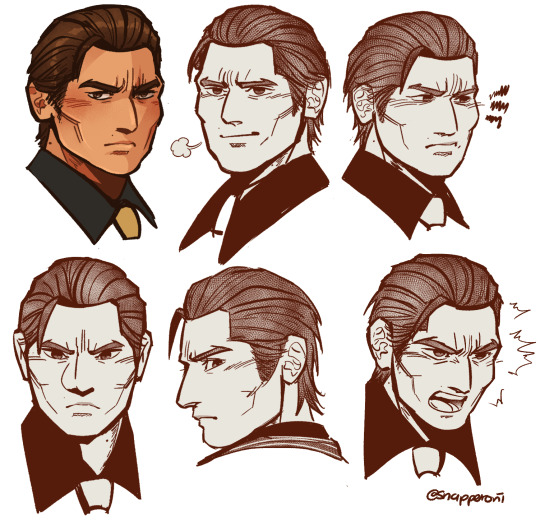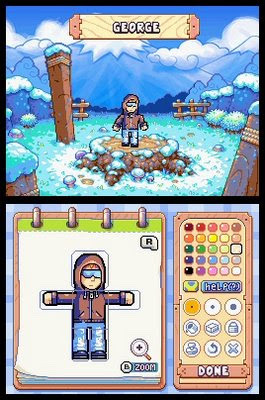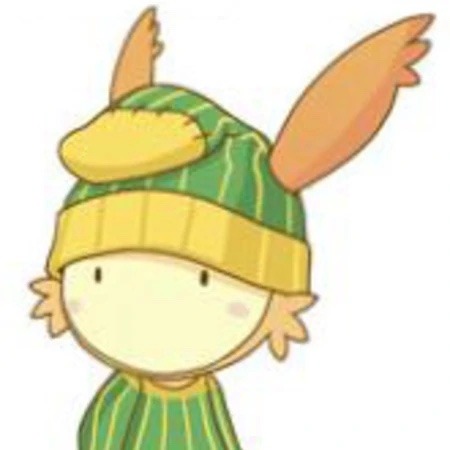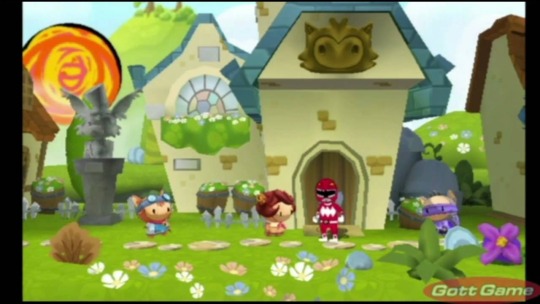#i had a crisis about how i draw mine again so i wanted to redraw like. the first couple times i drew him
Text

2024 redraw
2022 ver below

#rgg#ryu ga gotoku#ryu ga gotoku 3#yakuza series#yakuza 3#yoshitaka mine#snap sketches#i had a crisis about how i draw mine again so i wanted to redraw like. the first couple times i drew him#i cant believe its already been like two years .... tf .....#anyway i wanna do a mine comic. no idea in mind rn i just wanna try drawin him in b/w again#i THIINK i really like how i drew him in my redraw. i mean OBVI more than in 2022 jaREJGLKEJ#i think i have his head and hair shape but .... catch me complaining three posts from now 💀💀#for now. for now. if i look at this any longer im gonna scream and find mistakes#ok bye my last class for the day is startin jeRLGK
92 notes
·
View notes
Note
whats dtl about ifff ud like 2 talk abt it i see cute sprites & decide i wanna know things.. hehe the top hat n cape guy gif is in sync w my music hehe
IM SO GLAD U ASKED this game is probsbly my favorite game ever its been a special interest if mine since i was 7 and i dont think its a GOOD game per se bt i love it a lot and it impacted me a lot as a little kid w a mild interest in art :)
so basically the game is a little 2d adventure platformer where u get to draw and design the character u play as. its p clunky and the way ur character moves looks rlly silly bt again this game was released in like 2010 on the ds so its ok .. the game also gave u templates to go off of and use too just in case u didnt want to design a character from scratch

the story of the first game is abt this world that was drawn into existence by “the creator” in the book of life. u hav this little sequence where u get to draw the world, and the forrests and the creatures tht wld inhabit it. the creatures tht inhabit the world are callec raposa and they r little fox creature w funny ears :)

like this guy (his name is zsasha and hes a thief but hes like a bad one who ends up returning all of the stuff he steals and also watching over a little orphan girl who he basically adopts LOL)
in the universe if the game the “creator” eventually went silent and the raposa lost hope in them ever returning. the world was slowly shrouded in darkness and gradually all of the raposa inhabiting this little village were either lost or left on purpose bc it was slowly falling apart. the game starts when one of the remaining raposa, mari, prays to u, the creator, to come back and help restore her village, saying that everyone else has lost hope but she still believes you can return to her. u can answer, and either say that u will help or you wont, but either way u end up agreeing to help her and she goes to tell her dad, the mayor, abt it. you create a “hero” to be the vessel you will speak thru, and thats the character u end up designing and playing as. the game is abt going to various areas from the village and rescuing all of the raposa that are lost there, as well as restoring the village to what it used to be and drawing in bits of the landscape, like the sun and plants and stuff.
the villain of the story is a guy named wilfre, who was another villager in the town who ended up drawing in the book of life bc he wanted to create things the way the creator had. he ended up making these big inky monsters and got consumed by them, and when u meet him at the beginning of the game he tears up a bunch of pages in the book of life which get scattered across the land and you have to collect them in order to restore the village.

so u basically just go around saving villagers, collecting pages of the book of life, and redrawing bits of the town that were lost to wilfres shadows. eventually wilfre ends up like, killing maris dad (the mayor) and then after youve restored a majority of the village you enter his realm and kill him!! yay :)
throughout the game you also meet these two weird npcs called heather and mike. heather is a little raposa girl who has half of her face covered in shadows, and shes mostly mute. shes found early on in the game and is taken care of by another one of the main characters named jowee

mike is a character u end up rescuing later on in the game, hes p confused and doesnt know how he got where he is, and hes also different from the other raposa bc he doesnt have ears like they do and kind of just looks like a normal human (even tho none of the raposa know what that is and they just think he looks rlly weird)

in the first game heather is shown to take a liking to mike but it isnt explained why and she doesnt talk to its left unexplained
so yah the first game ends with you, the hero, defeating wilfre. mari takes on the role of her father and becomes mayor of the town, and all of the raposa (+ mike) live happily in the town youve restored. the hero goes dormant because theyre no longer needed and u get a scene at the end of the game w them sitting by the ghost of maris father.
the SECOND game takes place a while after the first game, in which wilfre returns and captures heather at the beginning of the game. he also kidnaps a bunch of the other villagers and transports them somewhere else, and he drains the color out of the village the raposa were in. they end up fleeing on a giant turtle with an abandoned town on its back that appears while the color is draining from the village. inside mari and jowee find another mannequin similar to the one the creator had drawn the hero on in the first game. they pray to the creator for help and thats when u draw the hero u get to play as for that game!! the hero doesnt seem to remember mari and jowee or any of the events of the first game, but they agree to help them rescue heather and all of the villagers wilfre stole.
jowee also has like, this magic pendant that belonged to heather that he found after wilfre took her, which seems to be leading them to where heather is. they use that to navigate the turtle thru the ocean to a bunch of other islands on the world. the second game is basically about traveling to different islands and helping them restore the color thats been drained out of them by wilfre. you also meet these two characters, salem

who is a villain in the first island u travel to, and sock

who is a villager on the first island u visit who ends up befriending jowee and traveling with them while they try to save heather.
so ur doing all of that but THEN, halfway thru the game mari is shown to be talking to wilfre, and then she dissapears. jowee assumes wilfre has captured her too, but shes later seen on the turtle again, and rips out a bunch of pages in the book of life the way wilfre did in the first game, and then wilfre appears to take her away and says that shes working with him now. jowee is heartbroken but resolves to get her back as well as heather
THEN, sock, jowees friend from the first island whos been tagging along and helping out, is ALSO revealed to be wilfre in disguise and he betrays jowee and steals heathers pendent, leaving jowee with basically no means of finding heather and wikfre and mari by extension.
so eventually they do end up finding where wilfre is and mari is like “jowee you dont understand wilfre has shown me the truth of our world and who the creator is and thats why im helping him” and jowee is like “i cant believe yoy are helping him how could you i cant believe you bla bla bla” and so wilfre is like “FINE ill show you the TRUTH of this world” and takes jowee and then the hero is kind of left ln their own for a bit to like wander around the world and try to keep rescuing ppl and such. and eventually jowee comes back and is like shaken up but kind of vague abt what wilfre showed him, but he still decides to side with the hero and the creator and eventually mari is convinced by him to join them again as well
so u fight wilfre again and EVENTUALLY wilfre reveals that if you defeat him basically the entire world will dissapear and thats what hes been trying to avoid by fucking w things and messing with the book of life. so all of the raposa have a bunch existential crisis abt them ceasing to exist if they go thru with this but then they decide to to it anyway bc the alternative is just as bad blah blah and u go and kill wilfre and he does this when he dies which is cool
[the gif was fuckjng broken im sorry but like look up his sprites and youll fjnd it 💔]
and now heather is back!! and her and mari and jowee are all talking about mike and how important he is and meanwhile mike has no clue whats going on and is kind of freaked out by all of this, but theyre all like “mike you need to wake up” as theyre all fading out of existence and shit around him and eventually him and heather are the only ones left and they dissapear too
and THATS when you get the ending and find out it was all like a dream mike was having while he was in a coma after a car crash anx this plays while the credits role lol https://youtu.be/Kur0qaYM1jM
youtube
^ they ended up releasing different versions oft he game w a less dark (but still w the whole ‘it was all a dream twist’) and thats it!!
there was also another game released for the wii that like gave wilfre a girlfriend kind of but i never played it to completion bc it used the wii remotes motion controls to like draw and shit and it was rly janky and hard so i never finished it and most ppl did the same. i kind of rlly want to try playing it again tho bc it was a p cute looking game even if the controls were fucked up

AND YEA thats drawn to life its a weird silly little series tht i was obsessed w when i was a kid and it still holds a special place in my heart :) i basicaly just spoiled the entire series i guess but if u have a ds or a 3ds (bc the game is backwards complatible ! ) id still suggest like getting a cartidge off ebay or something and playing it bc its honestly a rlly sweet and beautiful looking game and i think a lot of it still homds up even if the controls r rlly janky now
#theres also rumors of another game in the series being released on the switch so :)#THIS IS SOOO LONG HAHAHA IM SORRY I RLLY CARE ANT THESE GAMES#long post
17 notes
·
View notes
Text
Lost edges 5
‘I am a sculptor a moulder of form
In every moment I shape an idol
But then in front of you, I melt them down
……..
In this house of mud and water
My heart has fallen to ruins
Enter this house, my love, or let me leave’
Rumi, https://allpoetry.com/I-am-a-sculptor,-a-molder-of-form 30/11/19
I am making another self-portrait. It is challenging. I start the portrait whilst moderating an A level exam, over three consecutive days. I re-draw several times, through initial stages of colour. At each stage thinking I’ve cracked it, only to come back and realise it looks weird. There’s a tendency in my mind to reassure, to encourage a veneer of flattery in terms of self-evaluation – not in beautifying the image necessarily, but in make-believing the work is more successful than it is. I need reassurance, even if it’s from myself. For me, painting is a constant struggle. It is endlessly digging deeper for a more profound understanding, against my less helpful instincts. I’ve struggled to structure the head correctly in paint. I initially made the head too narrow and have laboured this in error. Adjusting this has set in motion a series of other adjustments. It is a fluid process of pushing towards quality. Good is not good enough, and good is a distant country. The push towards understanding is an open question. I am not troubled by self. I’ve seen the suit of armour, with its imperfections and passages of integrity. Self is not a burden in working. I am troubled. How could I fail to be at this time? I’m painting that. This is the thematic route into the drawing. My initial inspiration for this painting, as a study of technique-meeting-idea, is a Rembrandt self-portrait. Black hat, enlarged eyes. I’m so impressed with the apparent fluidity of touch in his work while working with thick paint. It looks well-rehearsed, but it is almost impossible to understand how such subtlety is applied so confidently. Humility needed on my part. I notice I’m inclined to work with colour in blocks, a touch of Lucien Freud, who I admire, although it’s not necessarily helpful in achieving my intentions. In Freud, the edges of the unsoftened brushstroke give structure and huge physicality and gravity – the heart of his paintings. In Rembrandt, there’s more ‘inner’, more of the spirit. I’m wary of copying, but at this point of exploration I must accept that I will take time to work out a method and language that feels like my own.
At the end of this process I take the painting home and seek to work it up, thickening the paint in Rembrandt-like impasto. It has a rough, bold quality to it, which I find satisfying. There is a sense of Rembrandt in the lighting and colour, and the roughness of the work, makes for a physical edge that I want to associate with myself, in terms of capturing some internal quality of physicality. A desire for bravura. The more I look, however much I am seduced by the quality of paint, I know that the drawing is just not me. It’s clear that despite looking to widen the head in previous re-draws, I’ve not taken this far enough. I’m past the point of wanting it to be just OK, so I redraw with paint several times. I have to destroy the stage I had reached and built towards carefully. The new re-draw brings with it new problems. Nose is bigger and at the wrong angle. Big nostrils. Plausible, but not quite me. There is a degree of frustration here. I want the work to be resolved quickly. I am learning degrees of patience.
Painting the self-portrait is, mentally speaking, a layered, rich negotiation. A negotiation between my aspirations as a painter, and my confrontation of self-image. My internal self-image is brought outwards for external scrutiny. It is a curious thing to make a version of yourself that sits outside, permitting inspection in some sort of objective/subjective exchange of perception. Making a text from the text of myself, each simultaneously in dialogue, shifting on unstable ground. Saorsa (2011) describes the creative act as a process of questioning with no end, in which logic is not enough.
“in the creative process, logic is always superseded by artistic nuance, always interrupted, terminated, redirected and diverted, and the process itself becomes therefore a struggle, a constant dialectic between percept and affect where every mark is transitory and defined only by its indefinite character until the last mark is made.” P. 196
The conversation between painter-me and the painting-of-me, is mirrored by the dialogue of making. To make a painting is to engage in an endless hermeneutic arc. I make a series of decisions. I see them, reflect on them against my shifting sense of self-image, and then remake another set of decisions, which feed back, and back. As the text I create in paint becomes a mirror of self-image, it is evaluated and either assimilated or rejected. Each time these decisions are owned, made personal. I appropriate my own image, from the outside, as I reflexively create a self on both fronts.
The painting has its own laws and demands, which I must seek to reconcile with my own sentience. I am obliged to occupy an objective position. I observe my features with cold scrutiny. There is a structural logic and system to the initial application of paint. But in order to make the painting breathe, to make a true portrait I must move beyond my own distanciation of measurement and construction, making a head that looks like mine. I must make the painting ‘feel’, by entering its space, by allowing the painting to pass through my own boundaries. The painting forms in a space bordered by myself and the painting. The painting forms intuitively, through doubt, sensory navigation, the cold objectivity of form, structure, representation, as I walk the boundaries within which I am obliged to be form and formless, self and non-self, various possible depictions, an image with which I identify, an image which I reject. As I build a form, which looks ‘like me’, I build a ‘diagram’ constituted in doubt, a fear of failure, a sense of self-importance, mitigated by humility and a triumph of self-will and determination. The diagram slowly bleeds into the surface and looks ready to implode at any second. Saorsa (2011) describes the limitless expansion of the hermeneutic circle that the artist continually re-draws as a drawing is made,
“just as the artist must ‘enter’ the work to escape the limitations of contingency, there is indeed no going back. Truth cannot be turned away from once discovered, because where the truth of being is that, there is no truth, its revelation reveals the paradox that can only negate the meaning of the search for it, and thus negate in turn the purpose and meaning of Being. The true figure, the essence of Being that true understanding of the meaning of Being can reveal, exists therefore, only and perpetually in search for it.” (p.206)
I take the painting back to Cardiff so that it’s within reach of critique. From then on I am more patient, more considerate of the painting, hoping to move it gradually towards a conclusion. The painting moves from too yellow, too pink (I am a little infatuated with the flesh ochre) and back again. I lose and regain and alter the expression many times. I am looking for, throughout this drawing, a look of doubtful concern. There is a look in Rembrandt’s eyes in his late portraits that feels like his world is about to end. I make myself as a middle aged, fleshy, overweight figure, not entirely unlike Rembrandt in physical attributes. I have looked at myself, in drawing and painting, many times over the years. How much has this process altered the man that I am? How much is it changing me as I make this painting? I am reminded of the two-slit experiment. If the passage of protons through cardboard is affected by observation, how much does this act of looking at myself change the looker? How much do I resolve myself in order to appease observation? By handling paint, by entering a process of not-knowing myself, an interplay of distance and intimate proximity ensues, making myself strange. Elkins (2000) describes painting as a process that is meditative, physical, and a transgression of the normal boundaries of looking.
“The “experiment” of art changes the experimenter, and there is no hope of understanding what happens because there is no “I” that can absorb and control substances themselves. All that is known with certainty is the flow of fluids, back and forth from the tubes to the canvas.
In this domain nothing is secure. The alchemical or artistic work is strangely inside, and the human mind that directs it is also partly its inert substrate. What was once the agent of conceptual control over the work has become the bricks of its furnace, the weave of its canvas. The furnace produces a product that is the furnace, and the mind tries to watch a process that is the mind.” (P.166)
The painting is yet unfinished. It will always be so, just as I am in a state of constant flux. As the painting and I observe each other, the uncertainty is amplified. At some point when the painting is at a point of crisis, where it is a choice between ‘as far as it can go in this direction’ or ‘making a new painting’, I will walk away. A painting is never finished, says Osi Rhys Osmond (2017), it is only ever abandoned. When abandoned, the edge is hardened. From this form, a shadow is cast. It is the shadow I must walk into in order to make another painting. As I hold to form, I must simultaneously let go. As I assume a form, I must shed it, like a skin.
“Your grief for what you’ve lost lifts a mirror
Up to where you’re bravely working
……
Your hand opens and closes and opens and closes
If it were always a fist or always stretched open
You would be paralysed.
Your deepest presence is in every small contracting and expanding
The two as beautifully balanced and coordinated
As birdwings”
(Barks, C. trans. Rumi 2004, p174)
0 notes